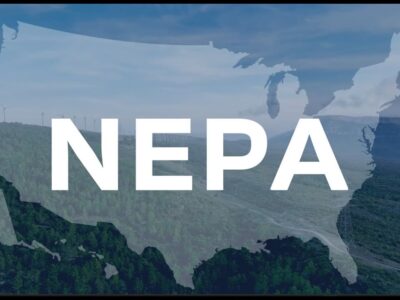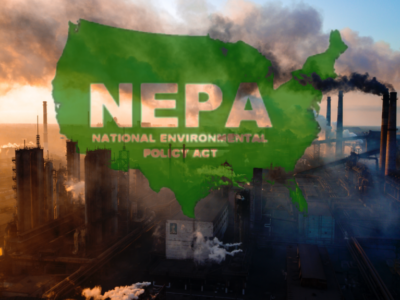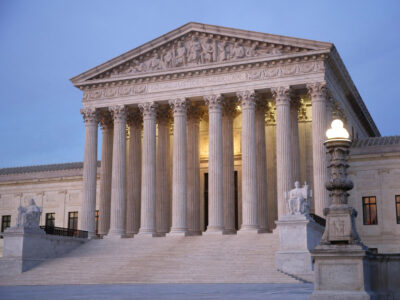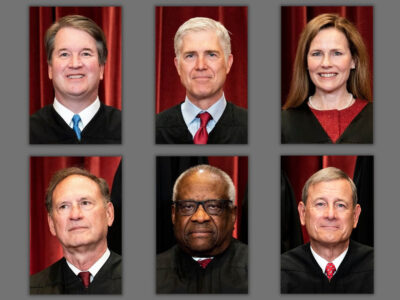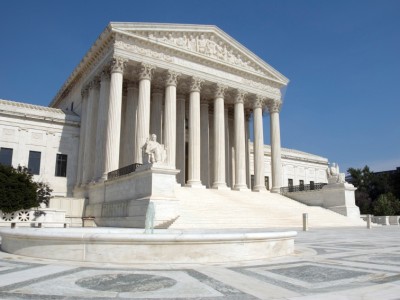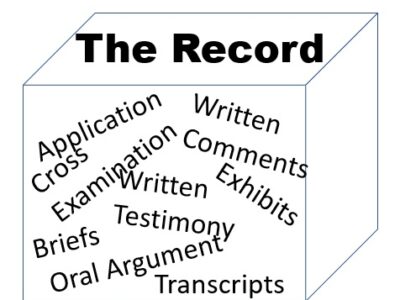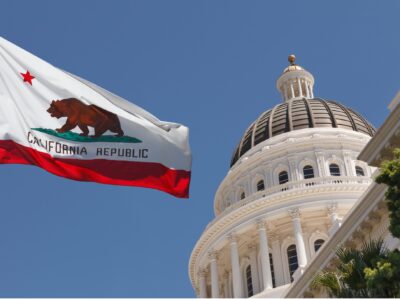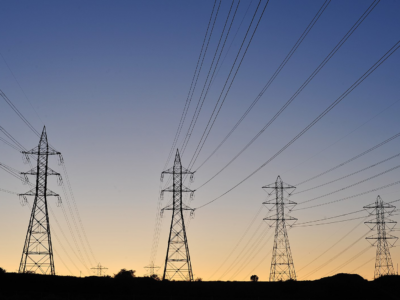Supreme Court
NEPA in the Supreme Court (Part II)
Here’s why the Supreme Court should reject radical arguments for limiting environmental impact statements.
Our last post explained the background of the Seven Counties NEPA case, which is currently pending in the Supreme Court. Today, we discuss the radical arguments that have been made in the case and why they should be rejected. NEPA requires that agencies consider the environmental effects of their projects, but the petitioners raise hairsplitting arguments to exclude obvious effects due to technicalities. Pleas for revising the law should be made to Congress, not to the Supreme Court.
CONTINUE READINGNEPA in the Supreme Court (Part I)
A pending case could mean radical retrenchment of a foundational environmental law.
In what could turn out to be another loss for environmental protection in the Supreme Court, the Court is about to decide a major case about the scope of the National Environmental Policy Act of 1969 (NEPA). The case, Seven County Infrastructure Coalition v. Eagle County, has important implications for issues such as whether NEPA covers climate change impacts.
CONTINUE READINGThe Case that Wouldn’t Die
The Juliana plaintiffs make a final effort to resurrect their case.
The district judge contemplates a wide-ranging trial about broad climate and energy policies, after which she would opine on their legality. The Supreme Court will likely think that putting an immense swathe of government policy on trial also violates the separation of powers — especially in a case where they are deeply skeptical of the underlying constitutional claim.
CONTINUE READINGUnderstanding Loper: A Sheep in Wolves’ Clothing?
The real world effects may be limited. Or they may undercut presidential power, to the surprise of advocates of the unitary executive.
Because there are so many outstanding questions about the Court’s new approach to judicial review, we won’t know its practical impact for some time. Its symbolic impact as an affirmation of conservative ideology is more obvious.
CONTINUE READINGUnderstanding Loper: The Grandfather Clause
Hundreds of past federal cases relied on Chevron. They remain good law.
To cushion the shock of abandoning Chevron, the Supreme Court created a safe harbor for past judicial decisions. This was well-advised. The Court itself applied Chevron at least seventy times, as did thousands of lower court decisions. The key question will be the scope of the grandfather clause. The Court’s discussion began by saying that …
Continue reading “Understanding Loper: The Grandfather Clause”
CONTINUE READINGUnderstanding Loper: The Primacy of Skidmore
A previously obscure 1944 case will now be central to judicial review.
Some commentators have tended to write off Skidmore and assume that judges will ignore agency views after Loper Bright. That is a misreading of the Court’s opinions in Loper and in Skidmore itself.
CONTINUE READINGPlaying fast and loose with reality
How the US Supreme Court’s recent decisions enable greater reliance on “alternative” facts
As the U.S. Supreme Court has moved into an era of second-guessing federal administrative agencies to an extent that we have not seen in 80 years, it has delivered yet another blow to reliance on accurate facts. When I served as an administrative law judge for California’s state utility regulators, my job in each proceeding …
Continue reading “Playing fast and loose with reality”
CONTINUE READINGIs the Sky Falling? Chevron, Loper Bright, and Judicial Deference
Perplexed? Worried? Here’s a guide to a fraught area of law.
If you’re confused about the Supreme Court’s ruling, you’re not alone. Scholars will be discussing the recent ruling for years. It clearly will limit the leeway that agencies have to interpret statutes, meaning less flexibility to deal with new problems. But unlike many commentators, I don’t think the sky is falling. I was teaching environmental …
Continue reading “Is the Sky Falling? Chevron, Loper Bright, and Judicial Deference”
CONTINUE READINGLosing Chevron: What Does It Mean for California?
The Supreme Court’s decision in Loper Bright will not necessarily impact how California courts review our state agency determinations. But we’ll feel it in other ways.
A question I’ve been getting a lot since the Supreme Court overturned the Chevron doctrine is: “What does this decision mean for California?” Here are three takeaways about how the Golden State is likely—or not—to be impacted at first blush. First, the decision does have the potential to impact California directly in some pending litigation. …
Continue reading “Losing Chevron: What Does It Mean for California?”
CONTINUE READINGGrid Experts Weigh in on EPA’s Good Neighbor Plan for NOx
UCLA Emmett Institute faculty submit amicus brief in Utah v. EPA, a major ozone case, on behalf of some of the nation’s leading grid experts.
Last year, EPA issued a new federal implementation plan to address interstate pollution from nitrogen oxides under the Clean Air Act’s Good Neighbor Provision. The Good Neighbor Provision is designed to address interstate pollution: those instances where emissions from upwind states impose harms across state lines, effectively shifting the costs of controlling their pollution to …
Continue reading “Grid Experts Weigh in on EPA’s Good Neighbor Plan for NOx”
CONTINUE READING



